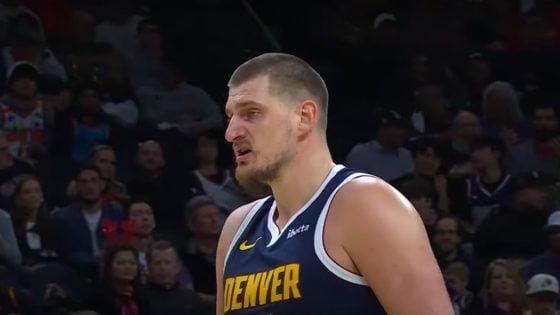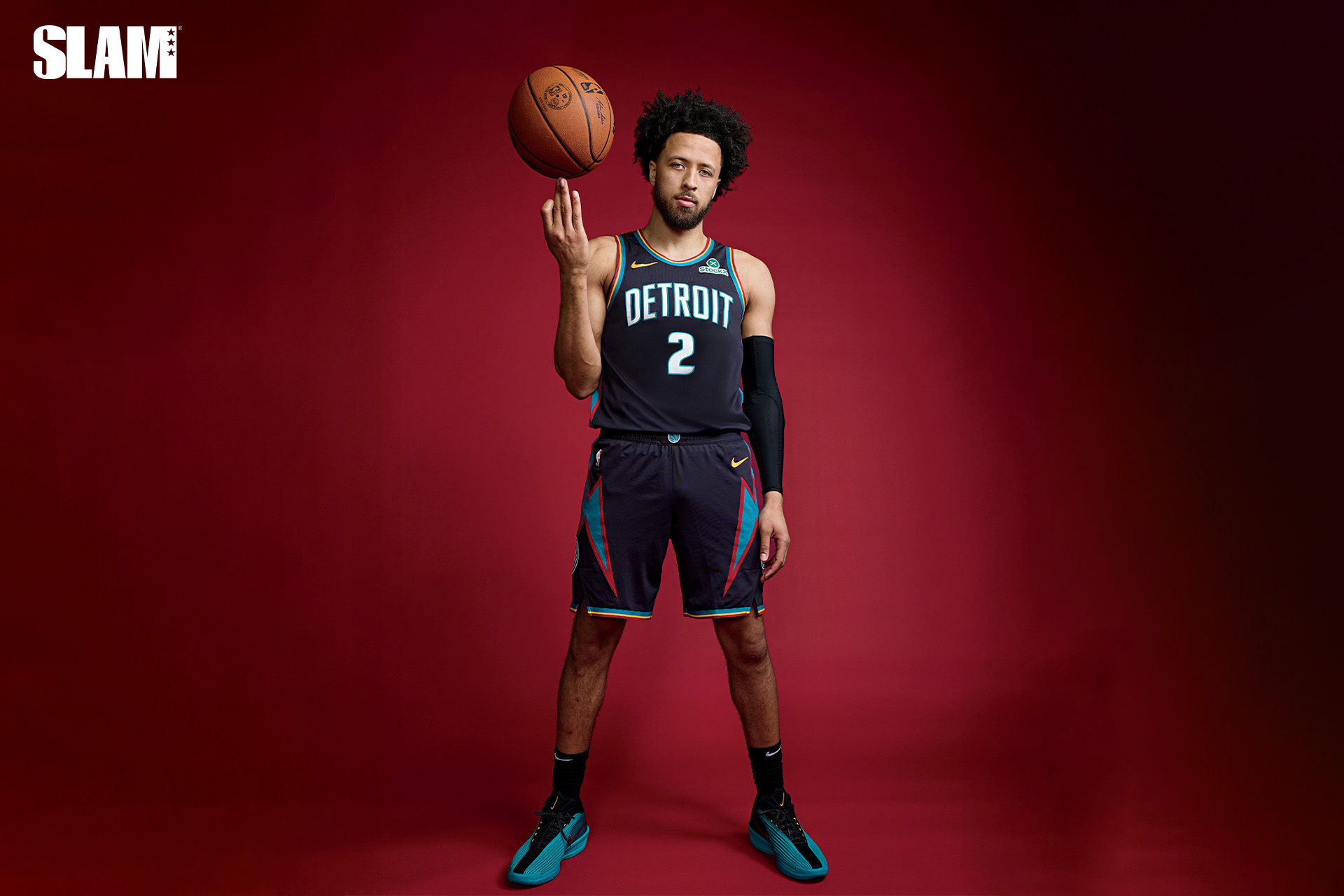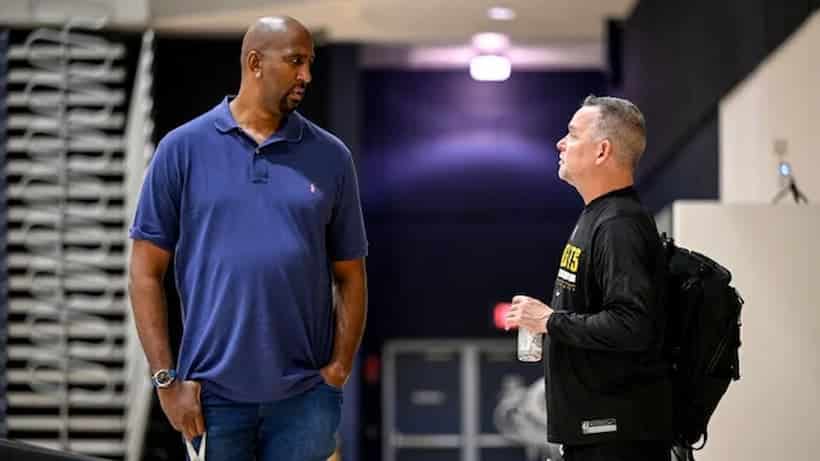As a 21-year-old college senior riddled with career anxiety about making it as a writer full-time, I was naturally scrolling LinkedIn the other day and came across a rather peculiar job posting:
Celtics Role Player (full-time)
$0.00 – $4,000,000.00 salary range
Job specifications:
- Responsible for 0 to 12 minutes per night, depending on the situation
- Potentially frequent trips up and down I-95 between Maine and Boston (gas reimbursed)
- Rotation-track position; possibility for promotion and rapid expansion of responsibilities
- Zero job security
Must be:
- NBA player
- Able and willing to shoot threes (above 40 percent preferred)
- Preferably taller than 6’3”, stocky, defensive-minded
Please do not apply on LinkedIn. Please e-mail Joe Mazzulla at doug.mccray01@celtics.com with CV, cover letter and personal essay about your favorite prehistoric mammal to apply.
The NBA season is close upon us, and it has me thinking about what it would take for the myriad Celtics role players trying to make the rotation to actually make said rotation. The preseason is a time for positivist beliefs that your favorite bench contributor might actually make the rotation and blossom into a productive NBA player. The regular season is where those hopes go to die.
It’s dog-eat-dog out here. When completely healthy, the Celtics bench rotation has three-and-a-half steady members: Al Horford, Payton Pritchard, Sam Hauser and Luke Kornet (who may or may not play in certain tense playoff matchups). Combined with the starting lineup, those are the nine “guys” for next season. But there is a reasonable cast of “other guys” looking to make their impact. But even if the Celtics go with an eleven-deep rotation this year, there are only two actual jobs up for grabs, as well as some injury fill-in part-time gigs here and there.
Here’s the list of contenders:
J.D. Davidson
Baylor Scheierman
Jaden Springer
Lonnie Walker IV
Jordan Walsh
Neemias Queta
Xavier Tillman
There are others — Drew Peterson, Ron Harper Jr., Jay Scrubb, and Anton Watson — who will surely make some contributions for the Maine Celtics this year, but are unlikely to even see garbage time minutes in Boston. But those seven seem like the actual contenders. What is it going to take for them to succeed in the Mazzulla Ball sphere?
Well, like any good recruiter, I’m going to sift through the applicants and eliminate them one by one, like this is some weird game show or NBA-Survivor-Apprentice hybrid. I’m not taking contracts into consideration because that’s just not my bag, so I’ll simply be saying if the player profile itself fits the job description Mazzulla is probably looking for. It’ll make sense. The last two standing are my official votes for rotational Celtics role players, and we’ll all go out for ice cream after.
1st Cut: Neemias Queta
First and foremost, you have to be able to shoot, which will make it difficult for Queta to crack the rotation in a real way unless a calamity of big man injuries befall the Celtics. As an injury fill-in, Queta brought energy, rebounding and even a bit of lob-threatery to the Celtics’ otherwise decimated rotation in mid-November of last year. He has tremendous size and even a bit of off-ball burst, occupying roughly the same offensive profile as Robert Williams III.
Unlike Time Lord, Queta does not have natural defensive instincts. He is slow to react to on-ball actions and struggled with positioning, getting fried by crafty big men like Nikola Vucevic (I was in attendance for this specific frying). Queta’s limited on-court time mixed with his awkward status as one of only two non-shooting Celtics (the other being Kornet) has led to a general confusion about where he needs to stand on the court when spacing and five-out sets dominate Mazzulla’s offensive scheme.
His size makes up for some of this, and he has flashed possibility as a shot-blocker, but in the long term, a complete non-shooter is not going to be able to stay on the floor for the Celtics unless he provides something completely overwhelming. Time Lord was a tremendous defender, but there’s a reason he was traded.
Photo by Brian Fluharty/Getty Images
2nd Cut: J.D. Davidson
Davidson has had ample time — the most out of anyone on this list — to prove that he belongs in the Celtics’ rotation, and it just hasn’t happened for him. He is clearly most comfortable with the ball in his hands and is a visionary passer, but lacks the physical tools to become some sort of evolutionary slashing point in a world where even Pritchard can sometimes struggle to stay on the floor.
His supporters will tell you that he is by far the most mature playmaker of the group, and is also still extraordinarily young for a third-year player; he’s only 22, entering the draft after only one year at Alabama. He has had the most time in the Celtics’ ecosystem, but is an undersized guard with no track record of consistent three-point shooting. His lack of reps so far is perhaps a function of how good the Celtics have been during his career, and Davidson may work out in a freer system like Aaron Nesmith did. But I doubt it’ll be here.
3rd Cut: Jaden Springer
Springer was acquired in slightly-bizarre circumstances, traded midseason and riding the bench all the way to a ring for just half a year of service. His acquisition was simply a flier on a physically talented player who hadn’t worked out in Philadelphia, rather than an operationally useful trade. But that hasn’t stopped the Springer Squad from wondering if he won’t unlock his 6’5” frame to become the next young rotational wing for the Celtics.
I’m not sold. Springer is tall but skinny, and while a statistically impactful and undeniably feisty defender, bulkier offensive threats won’t be overly bothered by his 190-pound frame. Nothing evidenced this better than the 2023 playoffs when 76ers Springer faced off against Jayson Tatum, scoring a memorable steal and some momentum. But Tatum spent the next few games playing Springer directly off the floor in favor of the stockier Georges Niang. Springer is a good defender, but he can be moved out of the way by bigger bodies.
His defensive upside might have been worth investing in if he could actually shoot, but his putrid 20-or-so-percent three-point shot has kept him from becoming a serviceable three-and-D NBA player. Unless there is improvement from beyond the arc at volume, Springer won’t make a real rotation for any contender, much less Boston.
:no_upscale()/cdn.vox-cdn.com/uploads/chorus_asset/file/25685034/2177574871.jpg)
Photo by China Wong/Getty Images
4th Cut: Lonnie Walker IV
This is a tough one, because Walker has shown he can compete on playoff-caliber stages, and has had a solid preseason shooting the ball. His exclusion comes down to two facts: position and age.
The Celtics are set at guard, able to slide Jaylen Brown, Pritchard, Jrue Holiday and Derrick White around depending on lineup and matchup. If one or two of those guys had a long injury history, I would maybe be more receptive to walker as an experienced insurance policy. But that four is the spitting image of durable, and there’s no minutes lying around for Walker to slot in.
Age is also a tricky one, because he’s not old at all; he’s 25. But that means we know what he is as a player, as, save for the super-duper-stars who can apply their unique skills across era of their own career (remember Michael Jordan adding that fadeaway?), 25 is around the time players max out. I think Walker is there.
That’s not the say the roster is supposed to be developmental, but Walker in his current state wouldn’t play in a playoff series, so why bother thinking he might on day? I sincerely hope he makes a rotation elsewhere; he’s that level of player. But the Celtics have other priorities.
5th Cut: Baylor Scheierman
The first thing I ever wrote for CelticsBlog was a roundtable about if Jordan Walsh or Oshae Brissett should see more backup-wing minutes. I said Walsh, citing his upside and shooting flashes. I was young, naive and… okay, I guess I am still all of those things… BUT I will not be falling for the rookie-with-enticing-tools thing again. Scheierman is out.
Like Walsh, this is not a bad thing for him. He was a productive player in college and has a real three-point shot, but needs time to incubate in Maine before he is ready for NBA game speeds. This is not a “cut” per se, but rather a deferral of a player the Celtics clearly felt strongly enough to draft in the first round instead of trading out of the spot.
Scheierman hasn’t had the best pre-season, but I don’t blame him. The NBA is a long way from Creighton, but he has the physical profile of a successful Celtics player; tall, stocky, and a functional three-pointer. If I had to bet on one of the cuts eventually becoming a productive Celtic, it would be him.
:no_upscale()/cdn.vox-cdn.com/uploads/chorus_asset/file/25685035/2157487192.jpg)
Photo by Brian Babineau/NBAE via Getty Images
The Winners: Jordan Walsh and Xavier Tillman
Tillman is an easy pick here. He was critical to the Celtics’ success against the big-and-tall Dallas Mavericks. He’s a polished pro who can really defend, really rebound and can make a corner three in the same way prime P.J. Tucker — can’t believe I just made “Prime P.J. Tucker” a thing — could spot up in his day.
Tillman gives the Celtics much needed Horford insurance, as well as the flexibility to go small without sacrificing physicality and edge. I really liked what Tillman showed last year, and am buying as much X-Man stock as they’ll sell me this eyar.
Realistically, Walsh will probably not play as much as I want him to. He’s sitting behind two All-NBA forwards and Hauser, who was a huge part of the winning strategy in the NBA Finals. Like Davidson before him, he will likely spend just as much time in Maine as he does Boston, and probably more.
But with the Walsh pick, I’m manifesting the application of Walsh’s freakishly long frame onto an NBA environment. He’s put together some pretty awesome highlight reels in Maine, Summer League and the Preseason, and the most bullish among us Walshists will tell you he has a shred of Pascal Siakam in him if that outside shot can develop.
Develop, develop, develop. That’s the name of the game with Walsh, but I don’t know if we’ll ever get to see his ceiling if he isn’t given a chance to show what he can make out of 10 minutes in the actual NBA at some point this year. Maybe it’s folly like it was last year, but sign me up all the same.






